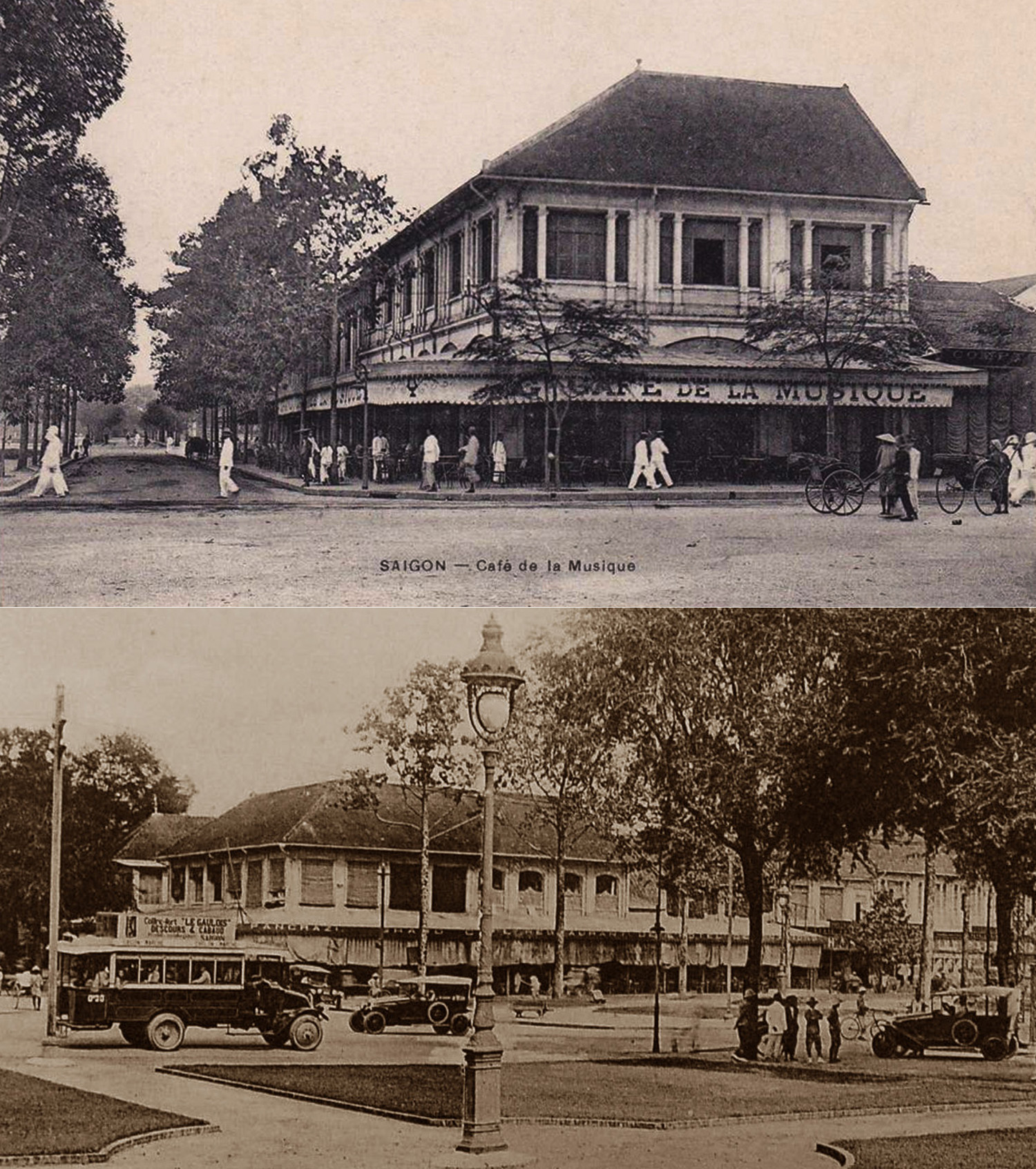
The Café de la Musique and the Grand Hôtel des Nations
This article was published previously in Saigoneer http://saigoneer.com
One of many French settlers of Corsican descent who made names for themselves in colonial Saigon, André Pancrazi is remembered as the proprietor of two old Saigon icons – the Café de la Musique and the Grand Hôtel des Nations.
Since André Pancrazi does not appear in the colonial records as a hotelier and restaurateur until 1900, little is known about his earlier business activities.
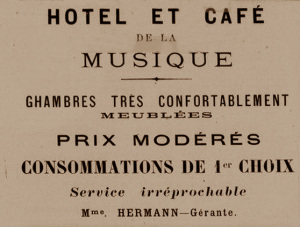
An 1889 advertisement for the Hôtel and Café de la Musique, then under the management of Madame Hermann
However, it seems that he was one of several Pancrazi siblings who settled in Saigon in the late 19th century, including Antoine (who became his business partner), François (a clerk in the Saigon Immigration Service) and Bonaventure (a colonial administrator in Long Xuyên).
The “Hôtel and Café de la Musique” at 4 place Francis Garnier [modern Lam Sơn square] – with which Pancrazi’s name is forever associated – was originally opened in the mid 1880s by a businesswoman named Madame Hermann. During her 1888 visit to Saigon, wealthy French widow Louise Bourbonnaud was advised by one of her fellow travellers to stay at this establishment, but she chose instead to take a room at the more famous Hôtel de l’Univers.
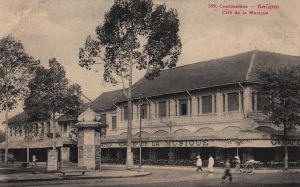
A view of the Café de la Musique from rue Catinat (modern Đồng Khởi street)
By the late 1890s, one Lucien Chêne briefly appears as the café’s proprietor, but in 1900 the business was acquired by André Pancrazi.
By this time, the Café de la Musique was one of the city’s most popular café-restaurants, but its hotel facilities were very limited, so in 1900-1901 Pancrazi commissioned the construction of the 65-room Grand Hôtel des Nations at 70 boulevard Charner, at the other end of the same city block. After the new hotel opened, the old hotel rooms above the Café de la Musique became the hotel annex.
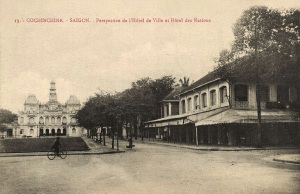
Saigon: a view of boulevard Bonnard and the Grand Hôtel des Nations
Sadly, no descriptions of the hotel’s facilities have survived. However, it seems that the “fine dining” offered at the “Grande Terrasse” restaurant of the Hôtel des Nations was appreciated by Saigon’s gourmands. In his Excursion en Annam of 1905, G. Le Roy Liberge commented that the hotels in Saigon were so uninviting that he preferred to rent a room – and to take all his meals at the “Restaurant Pancrazi.”
In 1913, André Pancrazi was awarded the Chevalier de la Legion d’honneur for his services to the city, and from that date onwards he also appears in the colonial records as a Municipal Councillor.
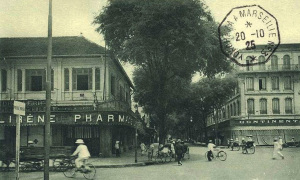
After 1922, the old Café de la Musique building was taken over by the Pharmacie principale L. Solirène
André Pancrazi remained a figure of importance in colonial Saigon’s hospitality industry for nearly two decades, but in 1919 he sold both the Café de la Musique and the Grand Hôtel des Nations, and soon afterwards he left Saigon. The records remain silent about the reasons for his departure.
By 1922, the Café de la Musique building had been taken over by the Pharmacie principale L. Solirène, which advertised itself as “the former Maison Holbé et Renoux, the oldest and most important pharmacy in the Far East, founded in 1865.”
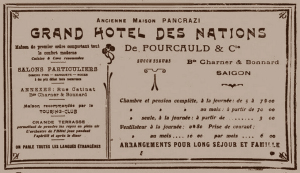
A 1929 advertisement for the “Ancienne Maison Pancrazi”
After Pancrazi’s departure, the Grand Hôtel des Nations continued in operation under the management of a M. de Fourcauld, but such was Pancrazi’s reputation that throughout the 1920s its advertising continued to describe the hotel as the “Ancienne Maison Pancrazi.” Indeed, Henri Danguy, in his Nouveau Visage de la Cochinchine of 1929, commented that one never called this establishment the “Grand Hôtel des Nations” – it would always be the “Hôtel Pancrazi.”
The Grand Hôtel des Nations survived on its original site until the early 1950s, when the building was demolished to make way for the six-storey Liên Seng complex. A new Grand Hôtel des Nations subsequently reopened in that building and survived until the early 1970s.
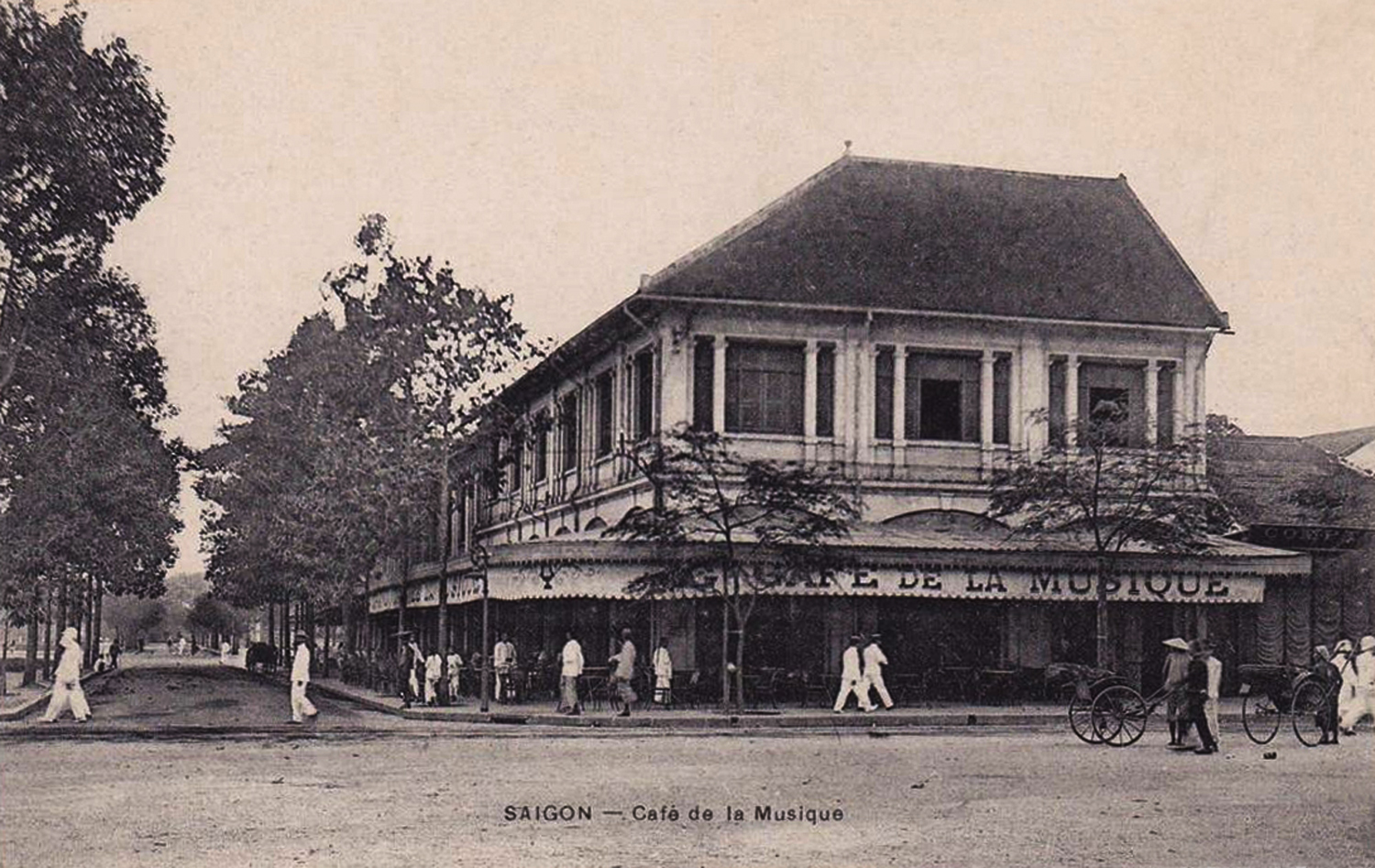
Another view of the Café de la Musique from rue Catinat (modern Đồng Khởi street)
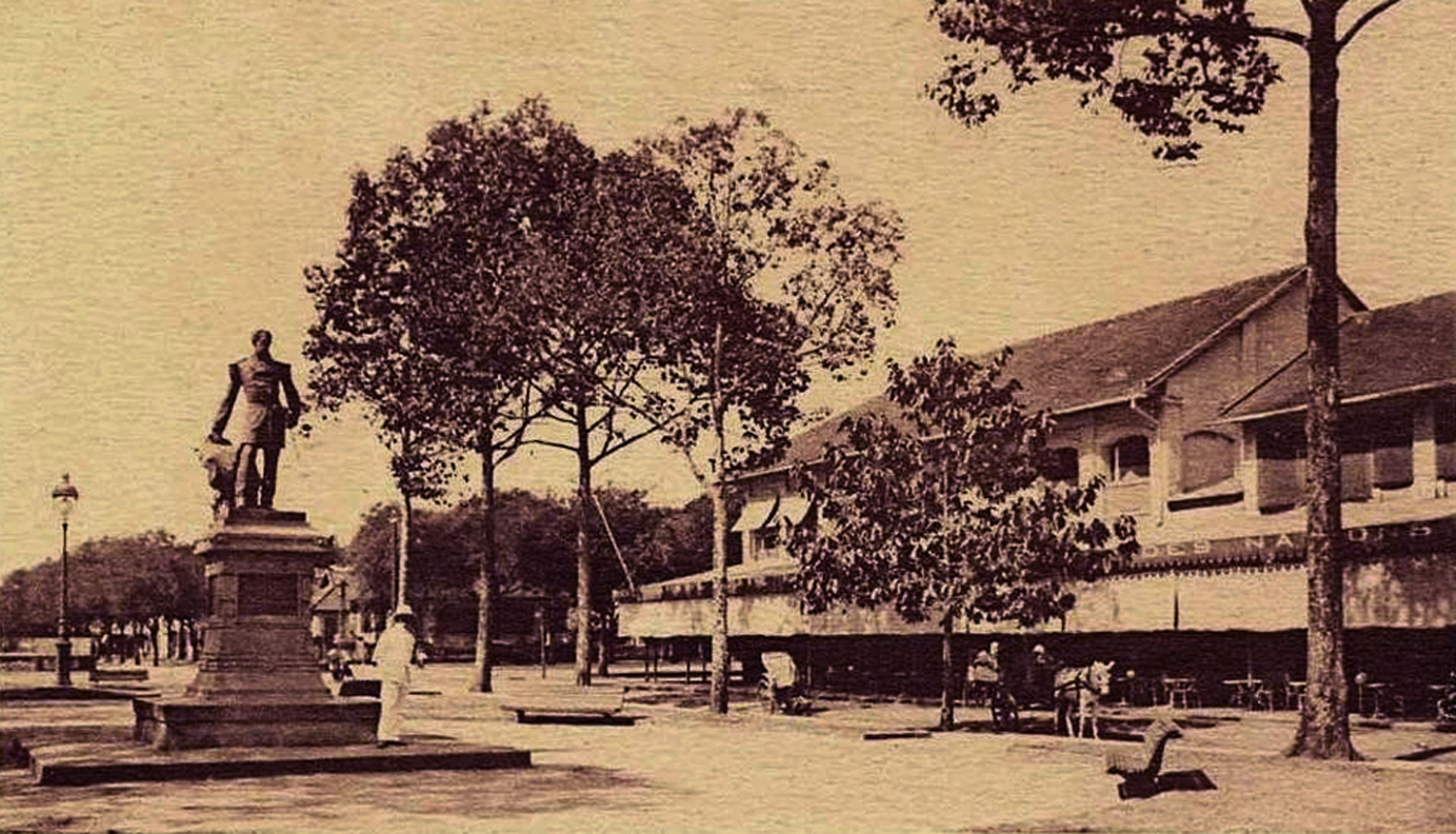
A view of the Grand Hôtel des Nations from place Francis Garnier (Lam Sơn Square)
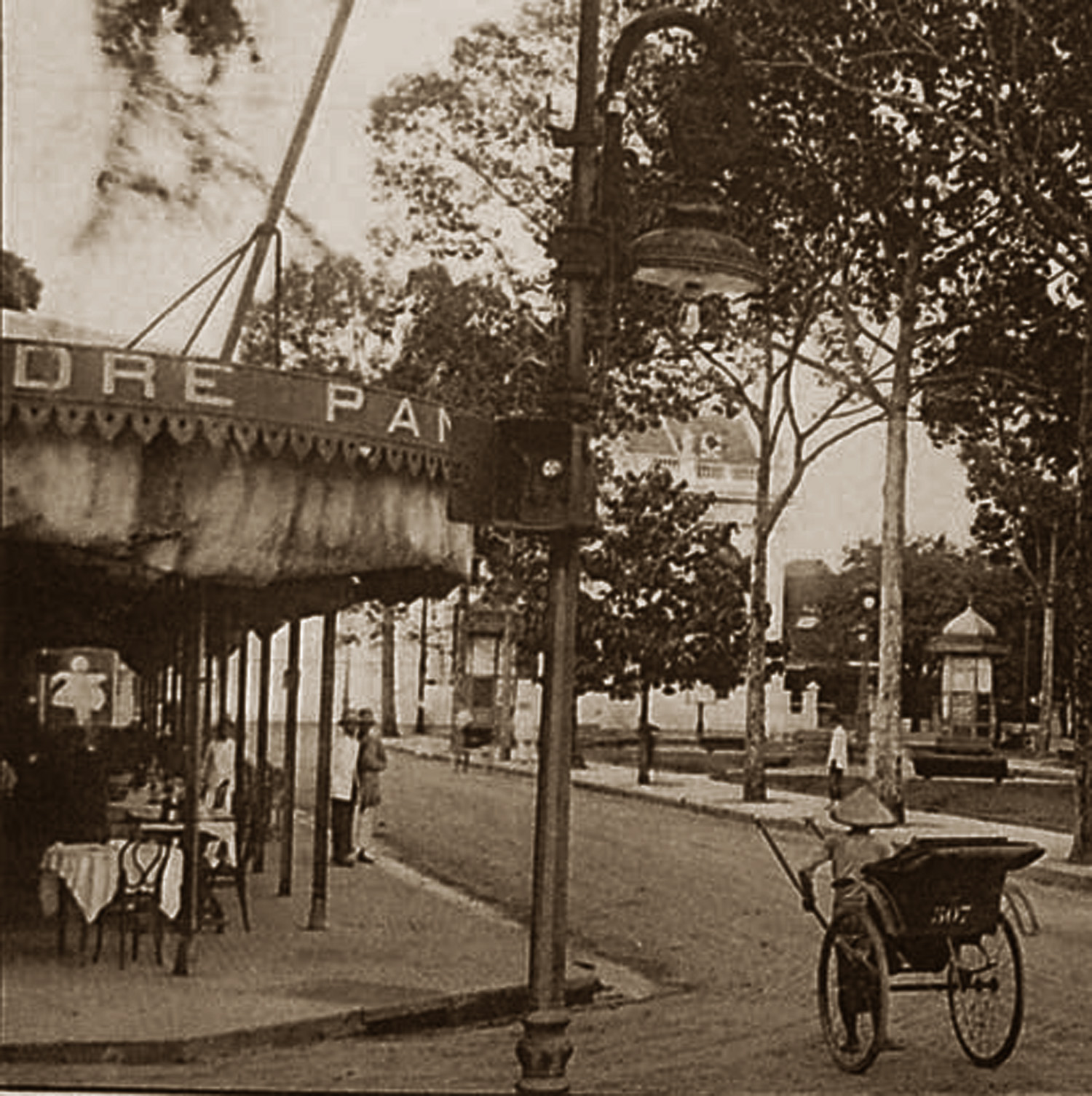
The “Grande Terrasse” restaurant of the Grand Hôtel des Nations
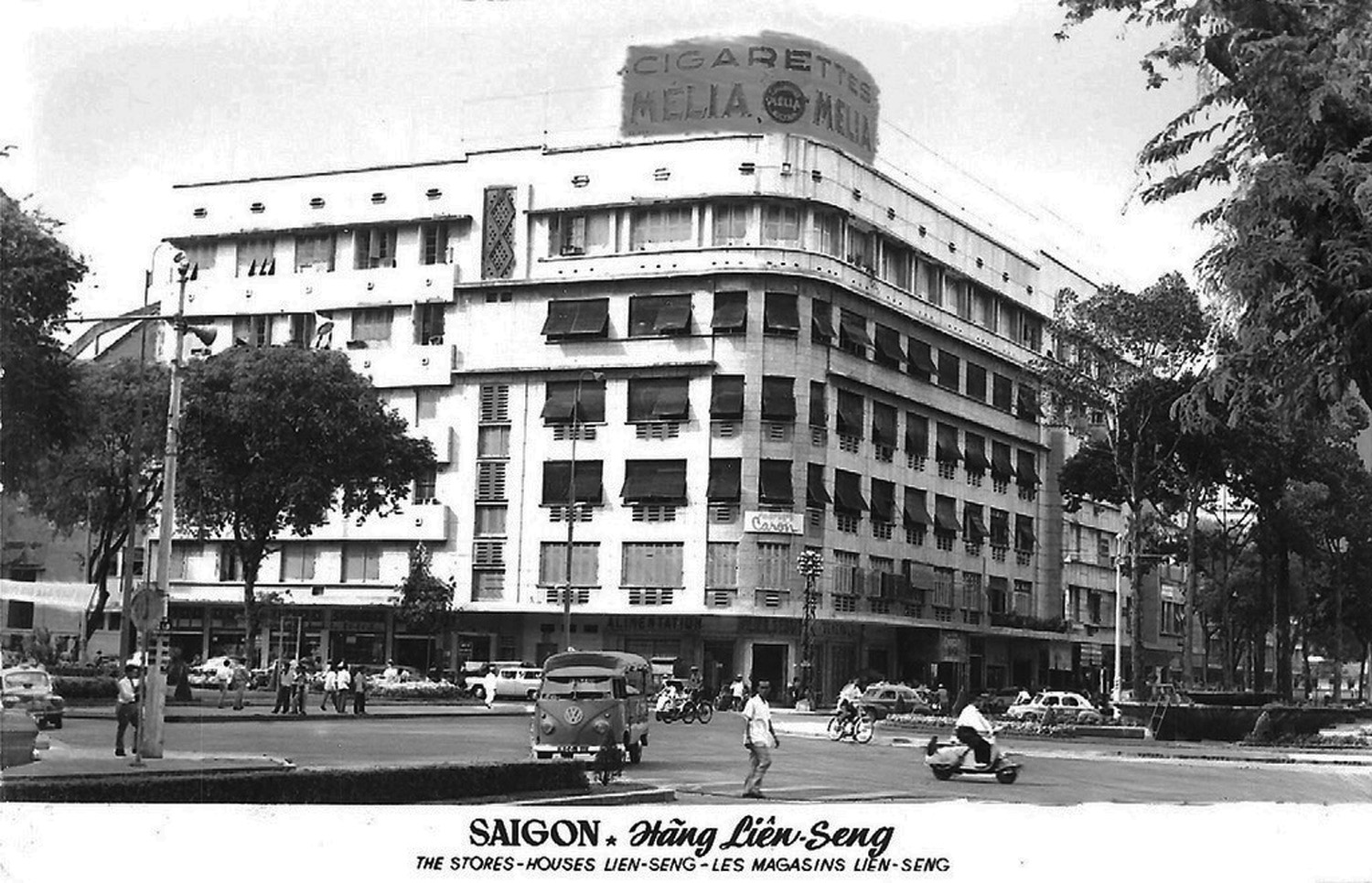
The original Grand Hôtel des Nations was demolished in the early 1950s to make way for the six-storey Liên Seng complex, but a new Grand Hôtel des Nations subsequently reopened in that building
Tim Doling is the author of the guidebook Exploring Saigon-Chợ Lớn – Vanishing heritage of Hồ Chí Minh City (Nhà Xuất Bản Thế Giới, Hà Nội, 2019)
A full index of all Tim’s blog articles since November 2013 is now available here.
Join the Facebook group pages Saigon-Chợ Lớn Then & Now to see historic photographs juxtaposed with new ones taken in the same locations, and Đài Quan sát Di sản Sài Gòn – Saigon Heritage Observatory for up-to-date information on conservation issues in Saigon and Chợ Lớn.

